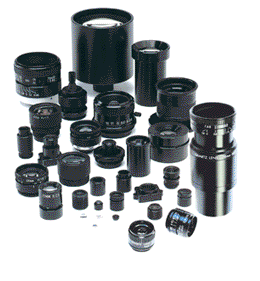High resolution lenses for machine vision — standard and custom lens design
What Is The Best In High Tech Camera Technology?
High Resolution Lenses for machine vision, instrumentation, inspection and vibration-sensitive applications. Standard and custom hi-res lens assemblies.

Hands down, full-frame DSLR cameras are considered the best when you’re looking for a super high-tech camera. A full-frame DSLR offers the option of live-view action camera shots, which are popular with landscape photographers. The technology allows photographers to focus and compose their shots through a LCD screen. These cameras also come with powerful processors to capture the image with large amounts of data and provide powerful processing behind the scenes. Photographers find that the full-frame DSLRs can capture images with low distortion and can pull in a high quality image without the use of a flash and in low light situations.
Videographers find that the incorporation of full-frame DSLRs into video camera and this is opening new photographic possibilities mainly because camcorders and video cameras offer a wider array of lenses from which to choose.
For the non-professional photographer the choices of DSLR cameras may be daunting, but once you’ve narrowed it down to a full-frame camera the other pieces, and lens options and accessories fall into place for many. When making a transition from a single frame to a digital, the full-frame DSLR is the next logical progression. The main reason for taking this technology leap is that the full-frame sensor captures the same image frame size as was captured with the 35mm film the weekend photographer has become accustomed to.
When shopping for the full-frame DSLR that best suits your needs you will want to know the type of light you will be typically shooting in. If you generally shoot in low light, look for a camera and lens that will capture action in low light settings. If you choose a camera that offers fewer mega pixels, it will more efficiently capture the images and enhance the quality of low-light camera performance.
Bottom line: DSLRs are still “reflex cameras”, what you see in the lens when you press the shutter is the image that is captured and reflected into the image sensor. Keep in mind that not all cameras capture the full-screen image of what you see and that can lead to photos not being quite what you imagined because of the lag time between shutter release and image capture.
The weight of the camera in your hand, or around your neck, should be another deciding factor when making your camera purchase and that should be followed by the ISO rating your camera choice offers. You can find ISO ratings that range from 100 all the way up to 12,300; the ISO rating is the camera’s function for drawing in light, the higher the ISO the lower the lighting situation it will function under.
Lastly, but by no means, the least, is the lens you choose for your camera. Lenses come in many sizes and are suited to particular specialties; for example a bird watcher will usually choose a larger telephoto lens while an everyday photographer will want a standard zoom lens. Before making a purchase spend some time experimenting with cameras to find the one that best suits your needs.